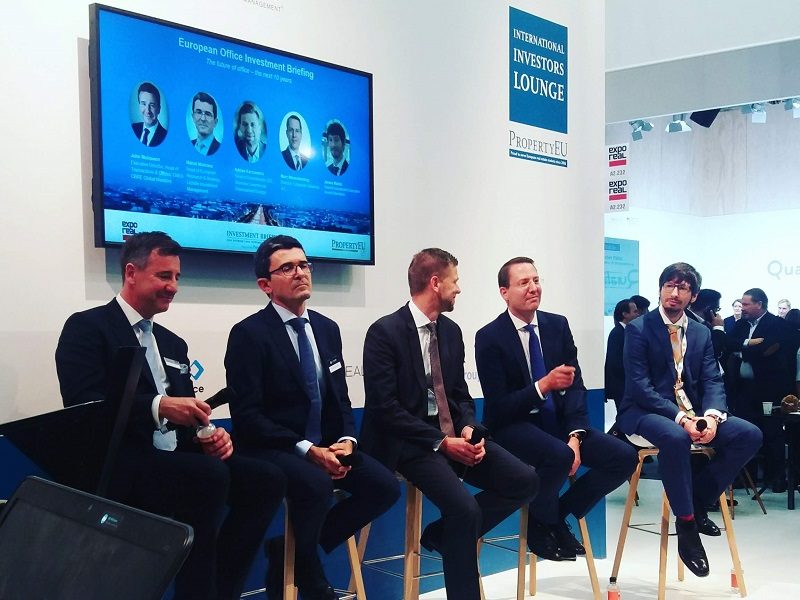Expo Real 2018: Office Investment Trends
Coworking is here to stay, specialists at the real estate and investment conference in Munich agree. Meanwhile, developers are striving to provide new stock that satisfies both the Millennial crowd and more experienced professionals.
By Alexandra Pacurar
JLL research presented during a briefing on European office investment at Expo Real 2018 shows that 20 to 30 percent of the labor force is working gig-level or on demand, thus not requiring a traditional office space. JLL Director Marc Mauscherning expects the segment to grow by more than 20 percent in the coming years. Above 80 percent of office space occupiers report that smart buildings improve employee retention, the same study reveals.
At the same time, globally, health and well-being are perceived to have the highest impact on engagement at work. Another interesting point in the report refers to the connection between location and talent.
“Location decision drivers are accessibility, city dynamism, clusters, real estate, talent and skills, regulations and taxation, and new visions,” Mauscherning said.
Developers looking to be ahead of the curve understand the implications. Adrian Karczewicz, head of divestments CEE for Skanska Commercial Development Europe, believes that the future of the office sector is strongly linked to labor well-being. “We started in 2009 with LEED, which was this blurry concept at the time. Now it’s a standard. Without LEED certification, an office building cannot be sold. Now it’s the well-being standard—the quality of air, quality of water, level of comfort, fitness facilities,” Karczewicz explained.
Flexibility: A must
Companies want to be where Millennials are, but it’s important not to miss the big picture. “Millennials are in our focus, but we must not forget that there are many generations at work that are not like that. There must be something for everybody, for the experienced employees,” Mauscherning said.
Mahdi Mokrane, head of European research & strategy at LaSalle Investment Management, believes that tenants are looking to mix flexibility and stability. “As landlords, we are going to have to accept flexibility and work with developers to bring flexibility into that building, but it always comes back to the location. We don’t know if this is sustainable in the long term, but we have to bring it into the building,” he added.
Mokrane insists that even though Millennials are in focus right now, this generation will also grow older and change its preferences and working habits. “We have to provide diversity and stay tuned, because there will be changes,” he concluded.
The trend of reviving central business districts is a thing in Europe as well, with many people preferring to work in the city center as opposed to a business park in the suburbs. “We have seen a shift from out-of-town to into-town and also a change in the quality of the buildings. We tried to provide a framework for planning and permitting to encourage this move and we have seen office occupancy grow,” said James Welsh, inward investment executive for Invest Aberdeen in Scotland.
As far as predictions go, Mauscherning foresees that, depending on the type of business, five to 30 percent of an investor’s total portfolio will be coworking.
Cover image by Thomas Plettenberg / Messe München. Copyright 2018, Messe München GmbH, all rights reserved








You must be logged in to post a comment.